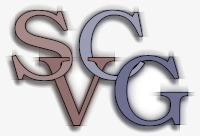Thesis and Report Guidelines
(for Bachelor theses, Student Colloquium papers, term projects/Onderzoeksstage papers, and Master's theses)
Problem Statement and Plan
Before you start a project, in particular one you came up with yourself, you should have a problem statement (1–2 pages). In this you should outline the following things:
- what is the general area you want to work in? why is it important?
- what is the state of the art, what have people been doing so far (some references)
- why do you want to do something different and what? why is that new/cool/better/different/more elegant/more efficient/etc.?
- what is the problem you want to solve? why does it solve the issues/problems with the previous approaches/methods/solutions and how does it do that?
- what is the methodology/steps that you want to use to approach the problem?
- what is the plan for the timeframe of your project?
Structure of the Thesis or Paper
- a usual thesis/paper structure follows the form: introduction, related work, concept, realization, evaluation and results, conclusion and future work (these are only guidelines, depending on your topic you may need to differ from these)
- most major chapters (or sections in a shorter paper) should have some form of summary: what have you learned?
Related Work
- cite all the related work properly that you base your own work on
- discuss why it is relevant and what is similar or different to your own work
- use images (from other papers) to illustrate the related work, credit the authors with a reference in the image caption
- give details for each publication (authors, title, year, page numbers, publisher, publisher address (town); for articles volume and number and month; for things other than books, articles, or papers also the type of publication)
- BibTeX helps for formatting this properly and consistently
- when you are looking for PDFs of papers:
- first try the digital libraries we have access to: ACM, Elsevier/ScienceDirect, IEEE Xplore, Wiley InterScience, parts of SpringerLink
- these work only from the RUG domain, if you are not at the university log into the proxy at https://login.proxy-ub.rug.nl/login
- look for PDFs of the papers on the authors' home pages
- google for parts or for the full title of the paper, google both with the title put in quotes and without quotes
- generally, using material that you did not write/create yourself without citation or reference (i.e., plagiarism) is not accepted and will be prosecuted, plagiarism scanners may be used
- authors' home pages and project pages sometimes also provide source code which can be helpful for comparison
Concept and Realization
- these are scientific documents, concentrate on the research issues, what are the problems and how did you solve them?
- this does not mean to ramble on about this or that bug, but conceptual problems and solutions
- how does your method/approach differ, how is it better than related techniques?
- what are the innovative techniques or methods that you have used, what is novel?
- give details on your technique/method and interesting (new) implementation aspects (e.g., discussing a class structure may be important for software engineering or a software documentation but not so much for graphics/visualization)
- use illustrations to clarify your concept and realization (e.g., concept sketches, screenshots, pictures of your system in use, etc., as applicable)
- if you can and if it applies, provide a video (e.g., a screen capture) as well
Language and Style
- write in a concise and easy to understand way, avoid overly long sentences
- if your reader does not understand what you try to tell him or her, than it is not the reader's fault but usually yours
- be consistent, e.g., use the same personal pronouns throughout your document ("I discuss" vs. "we discuss" vs. impersonal "is discussed")
- use proper expressions, do not use "don't", "ain't", "it's" etc.
- avoid the use of the future tense when you give an outlook of what you will talk about: "In Section 3 I discuss ..." rather than "In Section 3 I will discuss ..."
- there should be no sectioning part in your document where there is a header without text (e.g., the header of Section 3.1 should not directly follow the header of Chapter 3, but there should be some explaining text in between)
- each figure, table, and reference should also be somewhere referenced in the text
- write in a gender-neutral way, a user is not necessarily male (or female)
- spell-check, grammar-check, and proof-read your document before handing it in
- if possible, let someone else proof-read your document, too
Size of Document
(to be seen more as guidelines rather than strict expectations)
- Bachelor thesis: approx. 15–20 pages
- Term project (Onderzoeksstage): approx. 10 pages, paper format, use the TVCG format, see the description on the TVCG page
- Master's thesis: approx. 45–60 pages
Typesetting your Document
- again be consistent, make sure that everything is numbered, typeset, and referenced correctly
- make sure that your document has all necessary parts (page numbers, title, table of contents, text, list of references, lists of tables and figures, appendix; as appropriate)
- while you are free to chose any system you like, LaTeX may help you to easily achieve this consistency
- a good LaTeX template for a thesis is classicthesis
